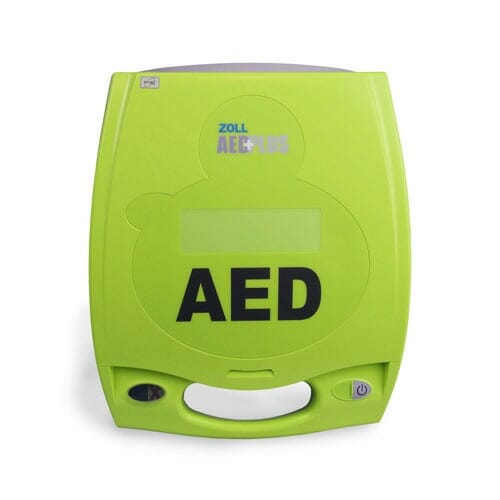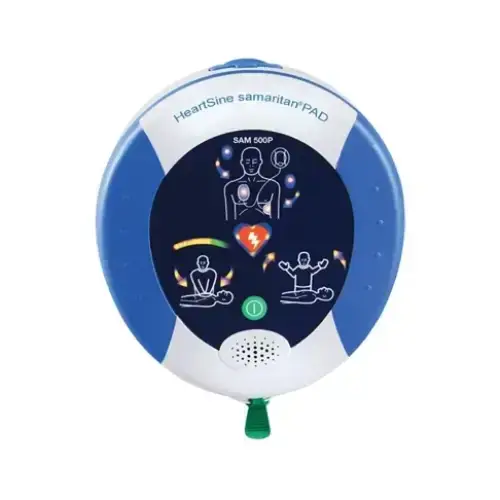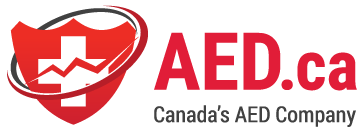
When it comes to emergency situations involving sudden cardiac arrest (SCA), having access to an Automated External Defibrillator (AED) can mean the difference between life and death. Every minute that passes without defibrillation decreases the chances of survival by 7-10%. Understanding how an AED works, when to use it, and why it’s critical to have them readily available can empower individuals and businesses to save lives.
What is an AED?
An AED, or Automated External Defibrillator, is a portable medical device designed to deliver an electric shock to the heart in cases of sudden cardiac arrest. It analyzes the heart's rhythm and, if necessary, delivers a shock to restore a normal rhythm. AEDs are user-friendly, with clear voice prompts and instructions that guide even untrained individuals through the process.

How Does an AED Work?
- Detecting an abnormal rhythm: When the AED pads are applied to the chest, the device analyzes the heart's electrical activity.
- Advising a shock if needed: If the device detects a life-threatening arrhythmia, such as ventricular fibrillation or pulseless ventricular tachycardia, it will advise the user to press the button (Semi-Automatic)or will deliver the shock automatically (Automatic).
Why AEDs Are Crucial in Public Spaces
SCA can happen to anyone, anywhere, at any time. Unlike a heart attack, which is caused by a blockage, SCA occurs when the heart's electrical system malfunctions. Without immediate intervention, the chances of survival are slim. AEDs increase survival rates significantly when used promptly, making their presence in public spaces vital.
Key Locations Where AEDs Should Be Available:
- Schools and universities
- Airports and train stations
- Offices and workplaces
- Gyms and recreational facilities
- Restaurants and Coffee Shops
- Homes
- Shopping malls and retail stores
- Anywhere where people are
How to Use an AED in 5 Simple Steps
- Call emergency services (911) to ensure professional help is on the way.
- Turn on the AED and follow the voice prompts.
- Attach the pads to the victim's bare chest as illustrated.
- Allow the AED to analyze the heart rhythm.
- Deliver a shock if advised by pressing the button. Continue following the AED’s instructions until emergency responders arrive or the person regains consciousness.
Training and Legal Considerations
While AEDs are designed for use by the general public, undergoing CPR and AED training can boost confidence and improve outcomes during emergencies. Many organizations, such as the Canadian Red Cross and St. John Ambulance, offer certification courses in AED and CPR use.
In Canada, Good Samaritan laws protect individuals who use an AED in good faith during an emergency. This legal protection encourages bystanders to take action without fear of liability.
Maintaining an AED
Regular maintenance ensures the device remains functional when needed. Key aspects of AED maintenance include:
- Battery checks: Ensure the battery is charged and within its expiration date.
- Pad replacement: Pads have an expiration date and should be replaced accordingly.
- Routine inspections: Many AEDs perform self-checks and display a status indicator; a green light typically means it’s ready to use.
The Cost of AEDs: A Worthwhile Investment
AEDs range in price from $1,899 to $2,500 CAD, depending on features and brand. While this may seem like a significant expense, the value of a life saved far outweighs the cost. Many communities and businesses qualify for grants or tax incentives to help with AED purchases.
Conclusion: Be Prepared, Save Lives
An AED is more than just a piece of medical equipment; it's a critical tool in the fight against sudden cardiac arrest. Whether you're a business owner, a school administrator, or a concerned citizen, having an AED readily available can save lives. By understanding how AEDs work and ensuring their accessibility in public spaces, we can all contribute to a safer and more prepared community.
Are you ready to make a difference? Consider investing in an AED today and taking a CPR/AED course to equip yourself with the knowledge and skills needed to respond to emergencies confidently.
FAQs About AEDs
1. Do I need training to use an AED?
No, AEDs are designed to be used by anyone, even without prior training. However, taking a CPR/AED course is recommended.
2. Can I accidentally hurt someone with an AED?
AEDs are designed to only deliver a shock when necessary. They will not administer a shock unless they detect a shockable rhythm.
3. How often should AED pads and batteries be replaced?
Most AED pads and batteries need to be replaced every 2-5 years, depending on the manufacturer’s guidelines.
4. Are AEDs covered by insurance?
Some insurance plans or workplace safety programs may offer partial or full coverage for AEDs. Additionally, grants may be available for public spaces and non-profits.
5. Can children use AEDs?
Yes, AEDs can be used on children. Pediatric pads are recommended for children under 8 years or weighing less than 25 kg. New units have automatic pediatric capabilities that allow you to simply press a button to switch from adult to child rescue.
Contact AED.ca today for more information on AEDs.

- AED for sale Canada
- Buy AED online Canada
- Best AED for home use in Canada
- AED suppliers in Canada
- AED price Canada
- AED brands available in Canada
- Where to buy AED in Canada
- AED regulations in Canada
- AED training courses Canada
- AED maintenance services Canada






